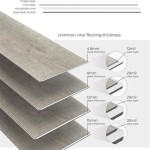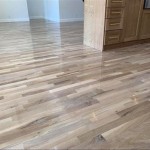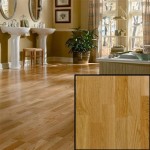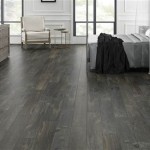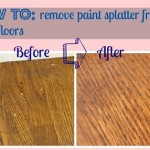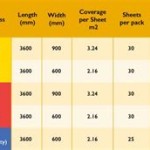How Much Should Hardwood Floor Installation Cost?
Hardwood flooring is a popular choice for homeowners seeking to enhance the aesthetic appeal and value of their properties. The beauty, durability, and timeless nature of hardwood contribute to its enduring popularity. However, a significant consideration when opting for hardwood floors is the cost of installation. Determining a precise cost can be complex, as various factors influence the final price. This article aims to provide a comprehensive overview of the elements that affect the cost of hardwood floor installation, enabling homeowners to make informed decisions and budget effectively.
Understanding the cost components involved in hardwood flooring installation is essential for planning a project. These components can be broadly categorized into material costs, labor costs, and ancillary expenses such as subfloor preparation, removal of existing flooring, and waste disposal. Each of these areas requires careful consideration and accurate estimation to arrive at a realistic budget.
Factors Influencing the Material Cost
The type of hardwood flooring selected is a primary determinant of the overall material cost. Hardwood options range from solid hardwood to engineered hardwood, and within each category, there are further variations in wood species, grade, and finish. Solid hardwood, made from a single piece of wood, is typically more expensive than engineered hardwood, which comprises multiple layers with a hardwood veneer on top. The thickness of the veneer layer in engineered hardwood also impacts its cost and durability.
Different wood species command varying prices. Common hardwood species such as oak, maple, and hickory are generally more affordable. Exotic hardwoods like Brazilian cherry, mahogany, and teak tend to be significantly more expensive due to their rarity, unique grain patterns, and superior density. The grade of the wood also plays a role; higher grades with fewer knots and imperfections will cost more than lower grades with more blemishes.
The finish applied to the hardwood flooring is another factor affecting material costs. Prefinished hardwood, which has already been stained and sealed at the factory, is often more expensive than unfinished hardwood. Prefinished floors offer convenience and consistency in finish, but unfinished floors allow for customization of stain colors and finishes to match a homeowner's specific aesthetic preferences.
Beyond the type of hardwood and finish, the width and length of the planks can influence the price. Wider and longer planks typically cost more due to the increased material required and the potential for greater wastage during manufacturing and installation. The quantity of hardwood flooring needed, measured in square feet, directly affects the overall material cost. Accurate measurements of the area to be covered are crucial for obtaining an accurate estimate.
Breakdown of Labor Costs
Labor costs constitute a significant portion of the total hardwood floor installation cost. These costs encompass the hours spent by professional installers preparing the subfloor, laying the hardwood flooring, and applying any necessary finishes or sealants. Labor rates vary depending on the installer's experience, the complexity of the installation, and the geographical location. Installers with extensive experience and specialized skills often command higher hourly rates.
The complexity of the installation can significantly impact labor costs. Simple, rectangular rooms with minimal obstacles will require less labor than more complex layouts with intricate designs, curves, or multiple doorways. Installations that involve custom patterns or borders also increase the labor time and cost. The method of installation, whether it involves nailing, gluing, or floating the hardwood flooring, influences the labor required. Nailing down solid hardwood typically requires more time and skill than installing engineered hardwood as a floating floor.
Geographical location plays a crucial role in determining labor costs. Areas with a higher cost of living tend to have higher labor rates for all types of home improvement services, including hardwood floor installation. Urban areas often have higher labor costs compared to rural areas due to increased demand and overhead expenses. Obtaining multiple quotes from different installers in the local area is essential to gauge the prevailing labor rates and ensure a competitive price.
Preparation is a key factor of labor costs. The preparation of the subfloor also contributes to labor costs. If the subfloor is uneven, damaged, or requires extensive repairs, additional labor will be needed to ensure a proper foundation for the hardwood flooring. This may involve leveling the subfloor with self-leveling compounds, patching cracks or holes, or reinforcing weak areas. Some projects require vapor barriers to be installed, which add to the labor as well.
Ancillary Expenses and Hidden Costs
In addition to material and labor costs, several ancillary expenses can impact the overall cost of hardwood floor installation. These expenses often include the removal and disposal of existing flooring, subfloor preparation, the purchase of underlayment or moisture barriers, and the cost of trim and molding. Failing to account for these expenses can lead to unexpected budget overruns.
The removal and disposal of old flooring, such as carpet, tile, or vinyl, can incur significant costs. The cost of removal varies depending on the type of flooring, the size of the area, and the disposal fees charged by local landfills. Some flooring materials may require special handling or disposal procedures due to asbestos content or other environmental concerns. It is important to include the cost of removal and disposal in the initial budget to avoid surprises.
Subfloor preparation is a critical step in ensuring a successful hardwood floor installation. An uneven or improperly prepared subfloor can lead to problems such as squeaking, cupping, or warping of the hardwood flooring. Subfloor preparation may involve leveling, patching, or reinforcing the existing subfloor. In some cases, a new subfloor may need to be installed, adding significantly to the overall cost. A professional assessment of the subfloor is essential to identify any necessary repairs or preparations.
Underlayment or moisture barriers are often required, particularly in areas with high humidity or concrete subfloors. Underlayment provides a cushioning layer and helps to reduce noise transmission, while moisture barriers protect the hardwood flooring from moisture damage. The cost of underlayment and moisture barriers varies depending on the type and quality of the material. Trim and molding, used to conceal gaps between the hardwood flooring and the walls or other surfaces, also contribute to the overall cost. The type and style of trim and molding can significantly impact the final aesthetic appeal of the flooring installation.
Another factor to consider is if the project requires moving furniture or appliances. Some installers include this in the cost of labor, while others will charge extra. Be sure to get clarification on who will be responsible for moving these items and what, if any, the associated charges will be. This is especially important for large, heavy items that are difficult to move.
Permits may be required for hardwood floor installation, depending on local building codes and regulations. The cost of permits varies depending on the location and the scope of the project. It is important to check with the local building department to determine if any permits are required and to obtain them before starting the installation.
Finally, allow for a contingency fund to cover unexpected costs or unforeseen issues that may arise during the installation process. A contingency fund of 5% to 10% of the total project cost is generally recommended. This fund can help to mitigate the impact of unexpected problems such as hidden damage to the subfloor, the need for additional materials, or changes to the installation plan.
By carefully considering all of these factors, homeowners can develop a realistic budget for hardwood floor installation and avoid unpleasant surprises along the way. Obtaining multiple quotes from reputable installers, thoroughly assessing the existing conditions, and planning for potential contingencies are essential steps in ensuring a successful and cost-effective hardwood flooring project.

Hardwood Flooring Cost 2024 Per Square Foot Mk

Hardwood Flooring Installation Costs 2024

How Much Does Hardwood Flooring Cost 2025

How Much Does Hardwood Flooring Cost 2025

Cost To Install Hardwood Flooring Floor Fixr

How Much Does It Cost To Install Wide Plank Floors Floor Supply

Flooring Installation Cost Guide 2025 Average S By Type

How Much Does Hardwood Flooring Cost 2025

How Much Does Hardwood Floor Installation Cost In Charlotte Nc

Cost Of Installing Hardwood Floors Top 2024 Guide
See Also
